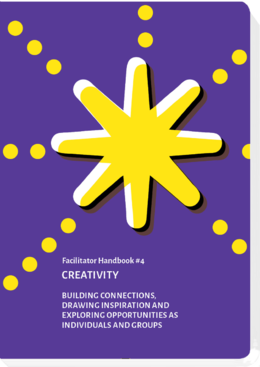Creativity can be applied under cognitive sounding topics, in international encounters, but as well in school or non_formal education. Our experience is, that participants gain a lot from having the opportunity to express (or learn to express) in a variety of media and "languages".
Creative workshops can be integrated in another training like a 1-2 day part. Or be conducted as single event. In any case creativity needs space - appropriate facilitations. Also important is the presentation of the products: a play, a vernissage, performance, a newspaper or blog.
Contents
Combination of converging and diverging methods
In example the international training "A stroke in the landscape, the border in your mind" in the German-Polish border region. The first days were following the goals of getting to know each other and of work on the topic "border". Therefore we had discussions in the seminar but as well field trips like to the border patrol.
The following days the faciltators' team offered four workshops: radio, stencil art, creative writing and drama. The connecting element between them was a joint performance which should present the outcome of the creative process on the central place of the city. The public performance addressed several competencies that are as well relevant for further public involvement: Standing in the public, involving other people, experience yourself in a challenging situation, or teamwork.
Advantages of addressing the whole person |
Examples |
|
|
Nils-Eyk Zimmermann
Editor of Competendo. He writes and works on the topics: active citizenship, civil society, digital transformation, non-formal and lifelong learning, capacity building. Coordinator of European projects, in example DIGIT-AL Digital Transformation in Adult Learning for Active Citizenship, DARE network.
Blogs here: Blog: Civil Resilience.
Email: nils.zimmermann@dare-network.eu





